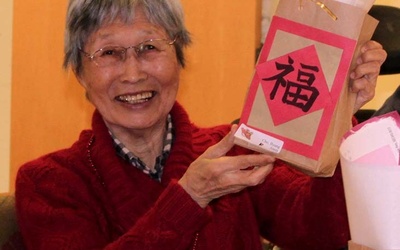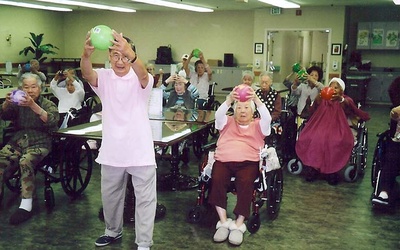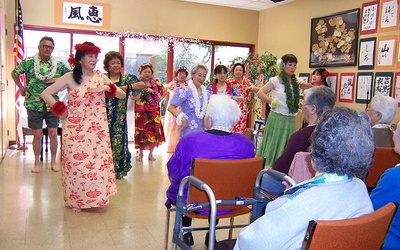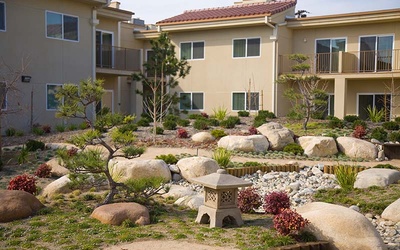West Coast Nikkei Eldercare: Planning for New and More Diverse Systems of Care
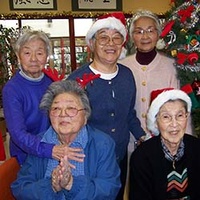
Nikkei eldercare was the right choice for my Japanese-speaking Issei grandmother, but will it be the choice my Nisei mother makes? What will I choose when I'm ready to renounce the joys and hassles of independent living? It was these questions that prompted this four-part series on the future of West Coast Nikkei Eldercare. Read on to see how nine different organizations are approaching the challenges of serving increasingly assimilated, diverse, and dispersed Nikkei communities.
Stories from this series
Part IV: Seattle’s Nikkei Concerns
April 8, 2011 • Nancy Matsumoto
Having surveyed the landscape of Nikkei long-term care choices in Los Angeles, the Bay Area, Sacramento and San Jose, I turned my attentions to Seattle, the last stop on my reporting tour. Although Japanese immigrants began arriving in Seattle in the late 19th-century, its Nihonmachi population has always been small compared to cities such as San Francisco and Los Angeles. At its peak, there were 8,500 members, according to Preservation Seattle magazine, and that number dwindled during the Depression. After …
Part III-2: Multicultural centers in Sacramento and Los Angeles
Sept. 21, 2010 • Nancy Matsumoto
>> Part III-1Although it does not specialize in Nikkei senior housing or offer a nutrition program, Los Angeles’ Little Tokyo Service Center (LTSC) is worth examining in the context of embracing an increasingly multi-cultural viewpoint and offering services that match. LTSC Executive Director Bill Watanabe explains that the 30-year-old non-profit began when Little Tokyo was populated mostly by Issei, Japanese nationals, and war brides. The goal was to provide linguistic and culturally sensitive social services to this community and, initially, to …
Part III-1: Multicultural centers in Sacramento and Los Angeles
Sept. 14, 2010 • Nancy Matsumoto
West Coast Nikkei eldercare organizations are preparing for a time in the not-too-distant future when Nikkei alone will no longer fill their programs and beds. This was the universal message I heard from the seven organizations I surveyed. Yet at the same time, I sensed a desire to hold on to the Japanese cultural identity that is at the core of organizations such as Keiro Senior HealthCare in Los Angeles and Kimochi, Inc. in San Francisco. We California Nikkei, especially the …
Part II-2: Nikkei Eldercare in San Francisco and San Jose
April 30, 2010 • Nancy Matsumoto
>> Part II-1For those in need of a more intensive level of care than what Kimochi provides, Bay Area seniors can go to Kokoro, a nearby non-profit assisted-living complex that opened in 2003. The facility grew out of a 13-year-long effort by a consortium of church groups, and is headed by a volunteer board of directors, a staff of 27 full-time and 20 part-time employees, and a corps of 25 volunteers, some of whom are old enough to be residents. …
Part II-1: Nikkei Eldercare in San Francisco and San Jose
April 27, 2010 • Nancy Matsumoto
In 1971, a group of San Francisco Sansei began providing Issei seniors with rides and pedestrian escorts to and from their homes, as well as help with government health benefits applications. The non-profit multi-service care organization Kimochi Inc., located in San Francisco’s Japantown, grew out of these early efforts. Around the same time, Japanese American student activists from San Jose State University and UC Berkley began organizing support systems for elderly Issei, focusing on health fairs in San Jose and …
Part I - Nikkei Eldercare in Los Angeles
March 25, 2010 • Nancy Matsumoto
My mother is in some ways a typical Southern California Nisei. She has participated in organized Nikkei ballroom dance, camera club, and widow’s groups. She plays marathon card games regularly with a group of Nisei friends, and travels the world on organized Japanese-American tours. A lot of her time also seems to be taken up arranging club dinners or luncheons, or the entertainment and door prizes that are an expected feature of these events. Although my mother is healthy and …

